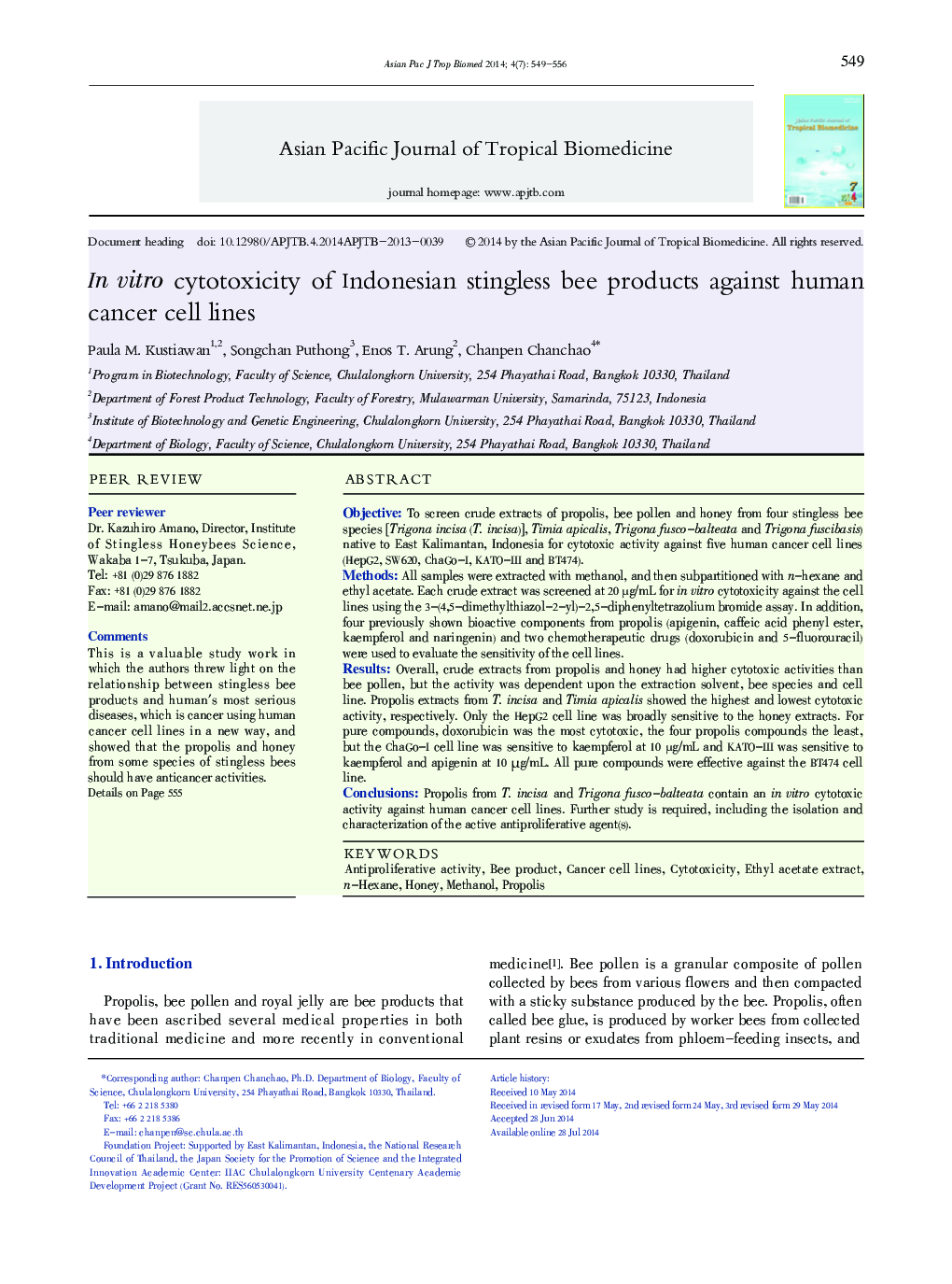| کد مقاله | کد نشریه | سال انتشار | مقاله انگلیسی | نسخه تمام متن |
|---|---|---|---|---|
| 2032566 | 1542887 | 2014 | 8 صفحه PDF | دانلود رایگان |
ABSTRACTObjectiveTo screen crude extracts of propolis, bee pollen and honey from four stingless bee species [Trigona incisa (T. incisa)], Timia apicalis, Trigona fusco-balteata and Trigona fuscibasis) native to East Kalimantan, Indonesia for cytotoxic activity against five human cancer cell lines (HepG2, SW620, ChaGo-I, KATO-III and BT474).MethodsAll samples were extracted with methanol, and then subpartitioned with n-hexane and ethyl acetate. Each crude extract was screened at 20 μg/mL for in vitro cytotoxicity against the cell lines using the 3-(4,5-dimethylthiazol-2-yl)-2,5-diphenyltetrazolium bromide assay. In addition, four previously shown bioactive components from propolis (apigenin, caffeic acid phenyl ester, kaempferol and naringenin) and two chemotherapeutic drugs (doxorubicin and 5-fluorouracil) were used to evaluate the sensitivity of the cell lines.ResultsOverall, crude extracts from propolis and honey had higher cytotoxic activities than bee pollen, but the activity was dependent upon the extraction solvent, bee species and cell line. Propolis extracts from T. incisa and Timia apicalis showed the highest and lowest cytotoxic activity, respectively. Only the HepG2 cell line was broadly sensitive to the honey extracts. For pure compounds, doxorubicin was the most cytotoxic, the four propolis compounds the least, but the ChaGo-I cell line was sensitive to kaempferol at 10 μg/mL and KATO-III was sensitive to kaempferol and apigenin at 10 μg/mL. All pure compounds were effective against the BT474 cell line.ConclusionsPropolis from T. incisa and Trigona fusco-balteata contain an in vitro cytotoxic activity against human cancer cell lines. Further study is required, including the isolation and characterization of the active antiproliferative agent(s).
Journal: Asian Pacific Journal of Tropical Biomedicine - Volume 4, Issue 7, July 2014, Pages 549–556
